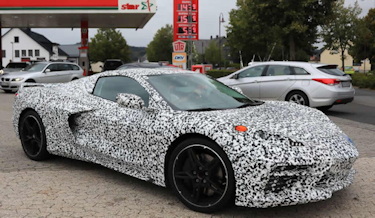Why Unreleased Corvettes Are Wrapped In Camo
Whenever a new model or redesigned car makes it to testing, there's always that itch to get that first peek. It's not uncommon to see cars in spy shots months before the vehicle makes its debut. Automakers know that people are eager to see the new cars, so they do their best to keep each one concealed.
Test drives are often scheduled at hidden or unassuming locations to keep nosy photographers away from the scene. The new car is also covered in black and white car camouflage so that no one can see its true appearance. How do these features work and why are they so effective?

According to Autotrader, in the early days, test mules were concealed from prying eyes with large bags made from nylon or mesh. It worked for keeping the car's design a secret, but it wasn't very convenient for the test drivers. These bags often covered up the headlights and taillights, which you need to use if driving with low light.
It's also hard to measure a car's speed if it's weighed down by heavy bags flapping in the wind. The extra weight can also hinder its braking performance. For these reasons, engineers developed a new kind of car camouflage to use instead.
Why the weird patterns?
A test mule's bodywork is now usually covered with layers of plastic and foam. When it's time to test the car's aerodynamics, engineers peel these off and replace them with patterned vinyl wraps. Still, many are often confused as to why black and white swirls were chosen to adorn modern car camouflage wraps.
Engineers explain that this isn't actually meant to keep the car out of sight. They determined that using this pattern was the best way to conceal a vehicle's revealing body lines. Naturally, our eyes will follow the patterns of the wraps instead of what's actually beneath them.
Read the entire story
Source: Addison White - MotorBiscut
Posted 11/19/21